Social media has been a key communication channel for as long as digital marketing has been around—but social media use is declining. Most marketers never believed they'd see the day.
After all, teens and young adults have reigned on social media since the advent of Facebook, the inception of Twitter, and the invention of Pinterest, Snapchat, and the rest.
But the day has come.
Social Media Usage Is Down
Recently, Convince and Convert analyzed findings from The Social Habit study, a yearly report from Edison Research and Triton Digital.
The findings regarding Americans age 12-34 are crazy when you look at trends over the past two years:
- Facebook usage dropped from 79% in 2017 to 62% in 2019.
- Twitter usage dropped from 36% to 29%.
- Pinterest usage dropped from 36% to 31%.
- LinkedIn usage is down from 23% to 21%.
- The only social network with stable usage is Snapchat, which neither grew nor declined from 2017 to 2019.
- The sole network that's registered growth in use among Americans 12-34 over the last two years is—you guessed it—Instagram. Usage is up just 2 points, from 64% in 2017 to 66% in 2019.
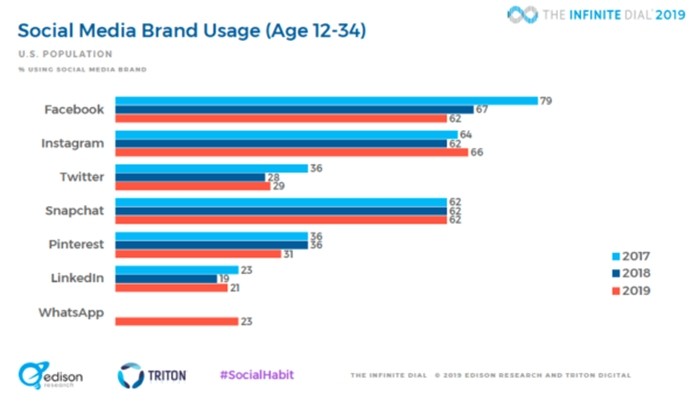
The bottom line: Social media usage is falling among Gen Z and Millennials.
For marketers, that brings up tricky questions.
How do we keep the attention of this major group of consumers without the crutch of social media? How do we continue earning loyalty when more and more of them are pulling away from the major channels we've used for valuable interactions?
I've outlined a few approaches that work, and one to avoid.
How to Keep Pulling in Attention and Loyalty from Young Consumers—Sans Social Media
1. Pushy, overly salesy pitches are out, and ads are irrelevant
Outside of social media, there are plenty of ways to attract young consumers, engage them, and pull them into your devoted audience.
Sales is not one of them.
Millennials are a tough crowd to entice with salesmanship. If you push for a sale, you're bound to fail. Why?
Because most Millennials are immune to traditional sales and ads.
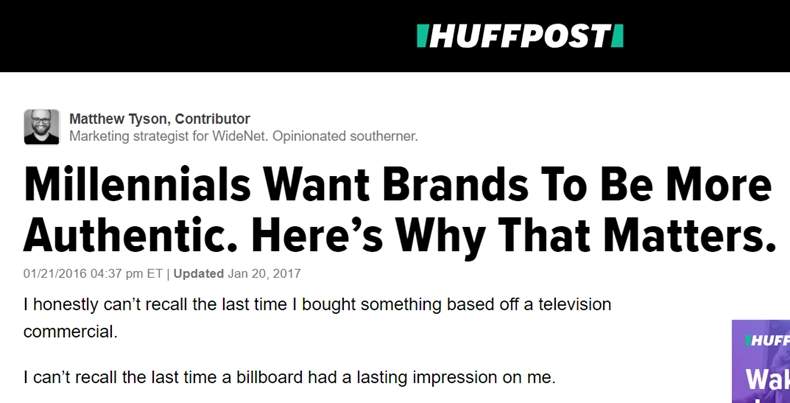
According to an eMarketer study, two-thirds of Millennials prefer digital shopping to buying in-store.
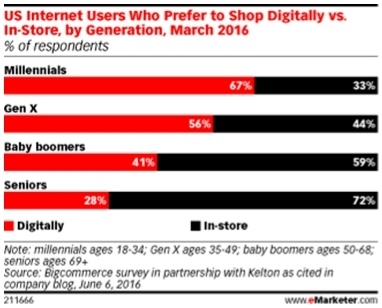
A digital shopping experience is self-directed, independent, and much less straightforward than buying in-store—but Millennials prefer it. Gen Z does, too.
The preferred buyer journey for young people is wildly unpredictable. They ignore traditional ads, hate cold sales pitches, and crave companies that actively and authentically engage with them.
So, if you're thinking of resorting to traditional marketing and ads to entice young consumers, think again.
2. Mobile-friendliness is key
Consider this: 67% of consumers are more likely to purchase when visiting a mobile-friendly site. Another 61% will leave a site if it's not responsive, according to Think with Google.
If your site isn't mobile-friendly, you'll automatically lose with the younger generation, no matter how great your content, products, or offers. Help keep them engaged with great design, UX, and website responsiveness at the base of your strategy.
3. Transparency and authenticity work
Transparency, honesty, authenticity, and character are all traits Millennials and Gen Z expect to see in the brands they support.
An Irregular Labs report found that authenticity is what matters most to Gen Z, in particular. Fully 67% said "being true to their values and beliefs" is what makes a person or brand a standout.
How do you build that trait so it's part of your brand persona and reputation?
Build great content.
One way to do that is to share stories on your company blog that reflect the humans you serve and hire. At Express Writers, we did this on our blog by compiling tips from our staff and speaking directly to a common client problem.
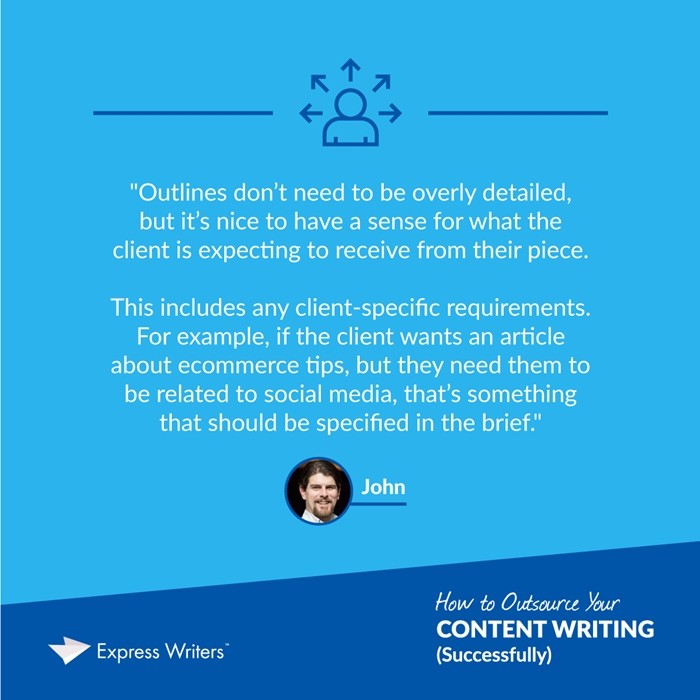
4. Building trust and loyalty will get you everywhere
Offering great content is one thing, but a one-off piece every few months is not enough to prove your worth. Instead, you need to tie great content to user intent and produce it consistently. That's how you build your reputation as trustworthy.
In other words, answer the questions your buyer is asking at every stage of the marketing lifecycle, and do it with excellence and expertise.
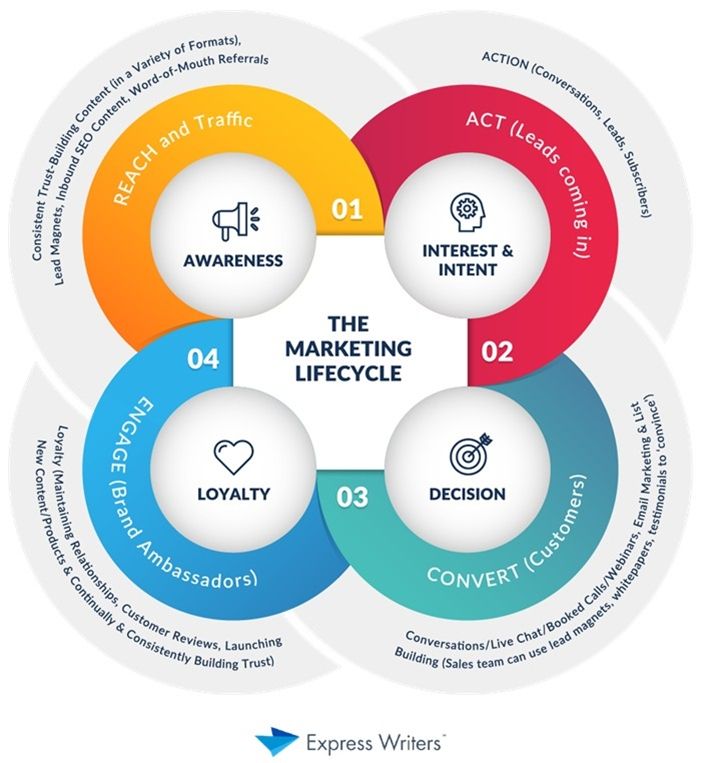
There are four stages in the lifecycle, and each connects to different types of content that will build trust and loyalty at that particular stage:
A. Awareness
- Maps to: Informational search intent (the buyer is problem-aware and searching for answers)
- Types of content to create at this stage: Lead magnets, inbound SEO content, information-packed guides
B. Interest & Intent
- Maps to: Investigative search intent (buyers understand the information/solution they need and are looking for the right option)
- Types of content to create at this stage: A website with clear navigation and CTAs, lead magnets centered on your core mission, e-books demonstrating your expertise, whitepapers and case studies showcasing client success stories
C. Decision
- Maps to: Transactional search intent (buyers are ready to commit: they know exactly what they want)
- Types of content to create at this stage: CGC (customer-generated content) in the form of positive reviews and testimonials, work samples or demos (depending on the company)
D. Loyalty
- Maps to: Mainly navigational search intent (the buyer knows you, likes you, and is looking for your brand online)—but can also map to each of the other kinds of intent
- Types of content to create at this stage: New product announcements, content with high informational value, and content that maintains your exceptional standards
5. Email is in
Email remains one of the most effective ways to reach your audience, no matter their age. Millennials, especially, rely on email as a mainstay for communication.
According to a ClickZ study, 73% of Millennials and 68% of Gen Z prefer to hear from brands through their inboxes.
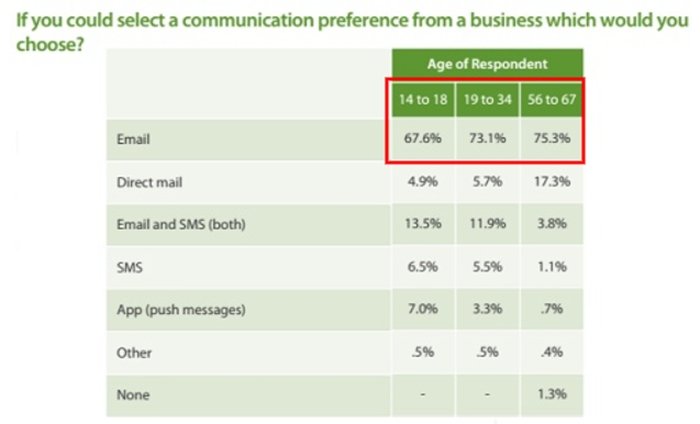
The key to engaging email? Get creative with it! Don't send ugly, staid, stagnant messages that fail to move people. A great example of engaging email comes from Tarzan Kay:
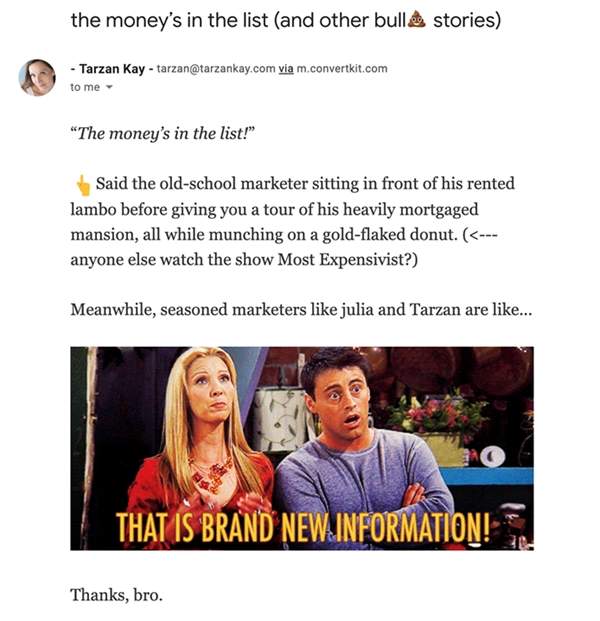
She is up front, authentic, and fun. She doesn't need a fancy, flashy design (though that rarely ever hurts); the draw is in her voice, style, and the information offered.
* * *
Overall, the value you provide at every touchpoint is what decides whether you earn (and keep!) your audience's attention, or whether you lose them altogether.
Provide consistent value, be real, stay mobile-friendly, and don't fall into the pushy sales trap—that's how you win over today's young generation of consumers, with or without social media.












